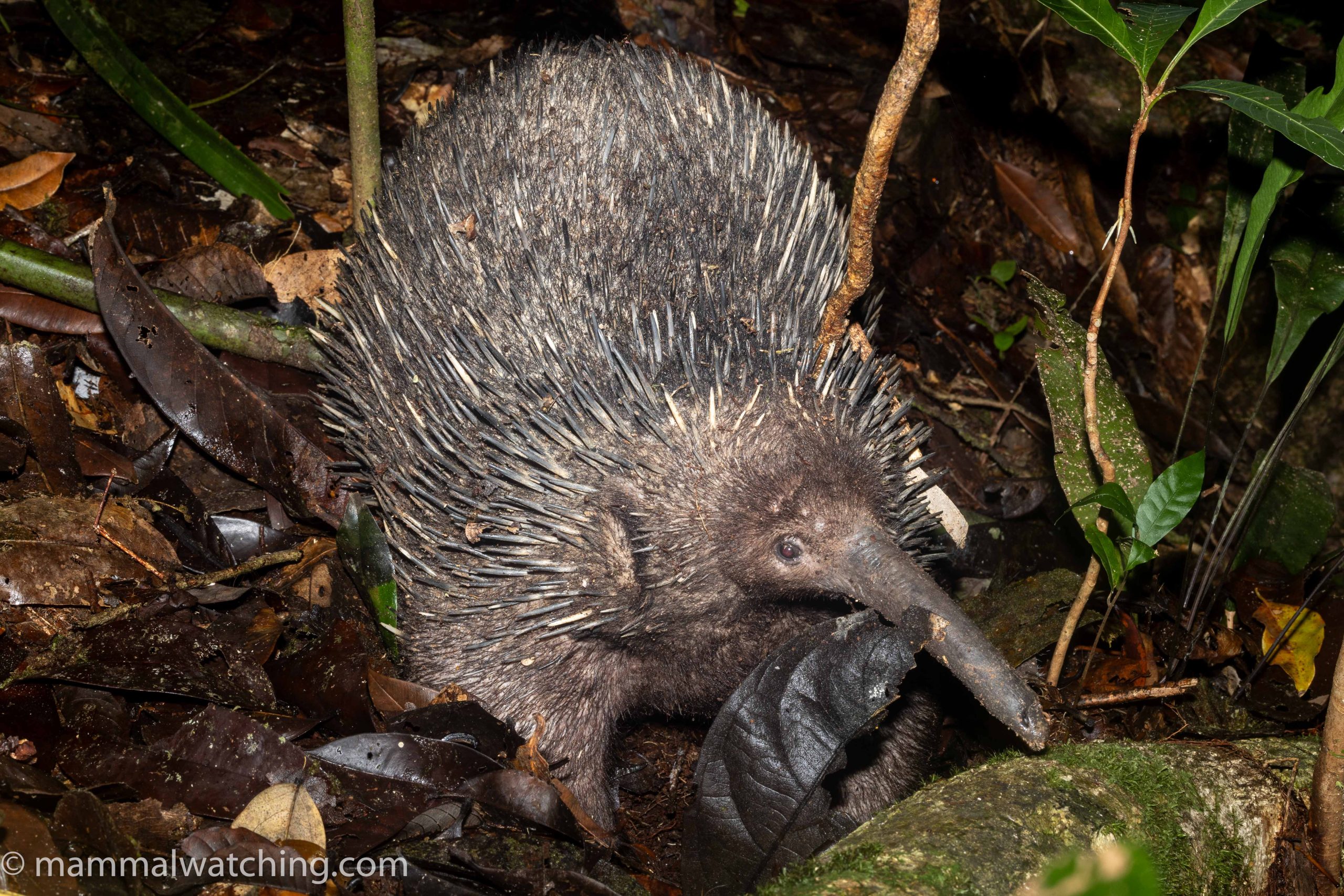
Indonesia – West Papua, Raja Ampat & the Moluccas
I visited West Papua’s Vogelkop’s Peninsula and Waigeo Island,a part of Raja Ampat, in June 2023 for an incredible two weeks of mammalwatching. In September 2025 I spent three days in the northern Moluccas.
West Papua
Gunung Mupi
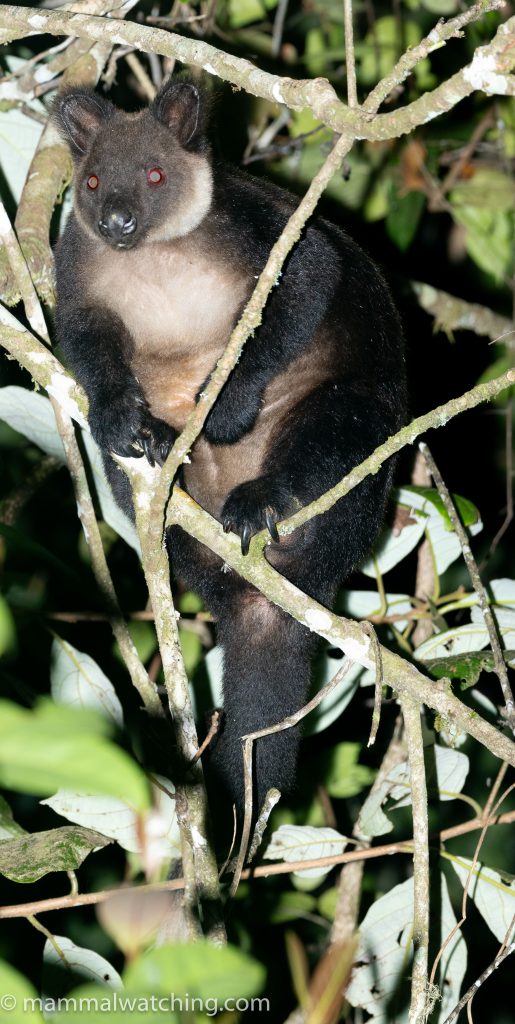
Vogelkop Tree Kangaroo (Dendrogalus ursinus)
Six nights in this hard to reach mountain camp in June 2023 was a mammalwatching nirvana. We saw Raffray’s Bandicoot (Peroryctes raffrayana), Common Echymipera (Echymipera kalubu), Ground Cuscus (Phalanger gymnotis), Northern Common Cuscus (P.orientalis), Arfak Ringtail (Pseudochirulus schlegelii), D’Albertis’s Ringtail (Pseudochirops albertisii) and Reclusive Ringtail (P.coronatus).
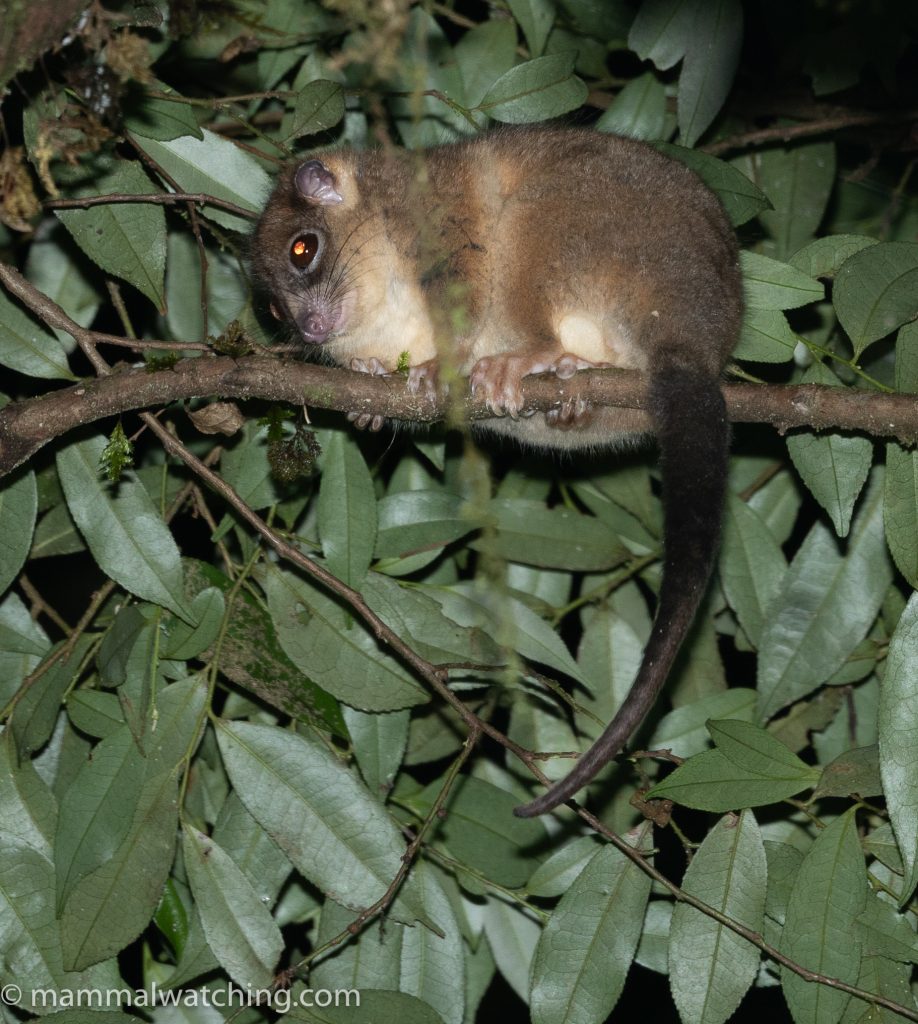
Arfak Ringtail (Pseudochirulus schlegelii)
We also saw Striped Possum (Dactylopsila trivirgata), Papuan Glider (Petaurus papuanus), Feather-tailed Possum (Distoechurus pennatus), Grizzled Tree Kangaroo (Dendrolagus inustus), Vogelkop Tree Kangaroo (D.ursinus), a possible Broad-headed Tree Mouse (Chiruromys lamia), Black-tailed Melomys (Melomys rufescens), Chestnut Tree Mouse (Pogonomys macrourus)and Gray-bellied Tree Mouse (P.sylvestris).
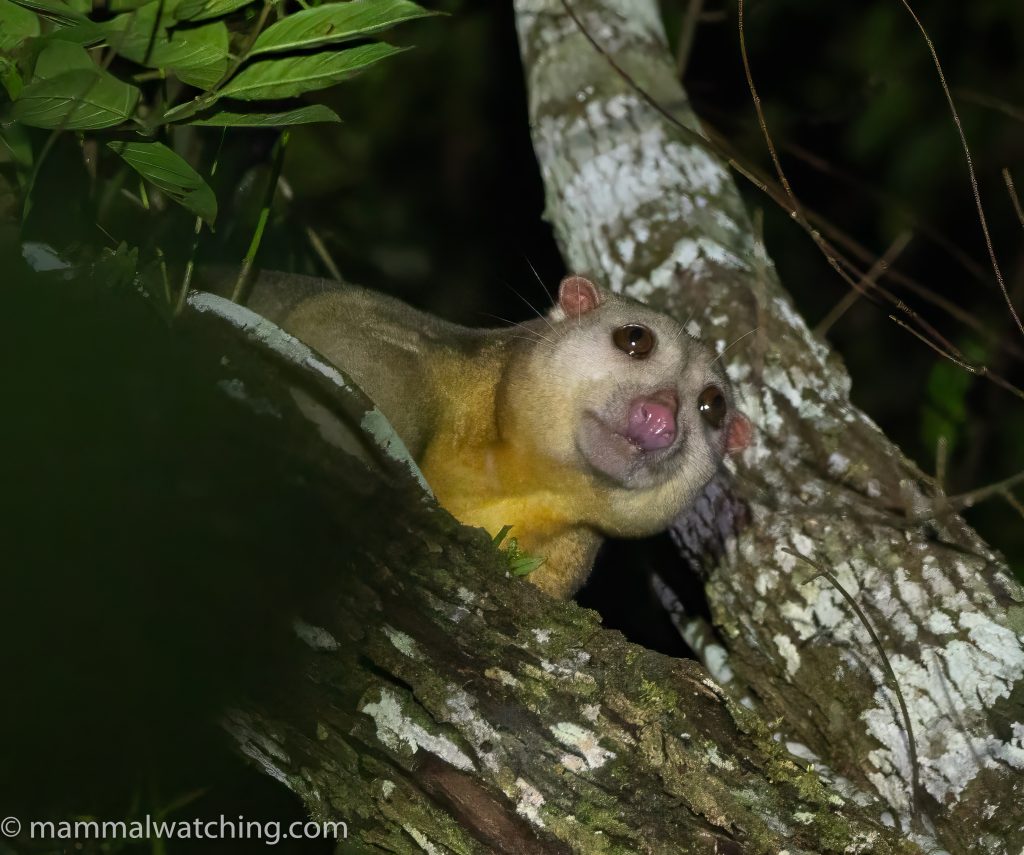
Northern Common Cuscus (Phalanger orientalis)
As well as Geoffroy’s Rousette (Rousettus amplexicaudatus), Dagger-toothed Long-nosed Fruit Bat (Macroglossus minimus), Common Blossom Bat (Syconycteris australis), Moluccan Naked-backed Fruit Bat (Dobsonia moluccensis), Unstriped Tube-nosed Bat (Paranyctimene raptor), Round-eared Tube-nosed Bat (Nyctimene cyclotis), Lesser Sheath-tailed Bat (Mosia nigrescens) and Small Melanesian Bent-winged Bat (Miniopterus macrocneme).
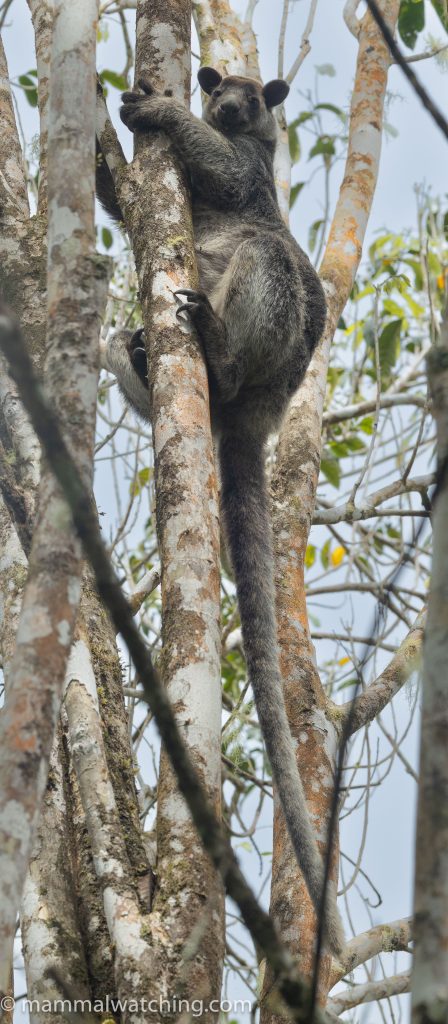
Grizzled Tree Kangaroo (Dendrolagus inustus)
Manokwari and around
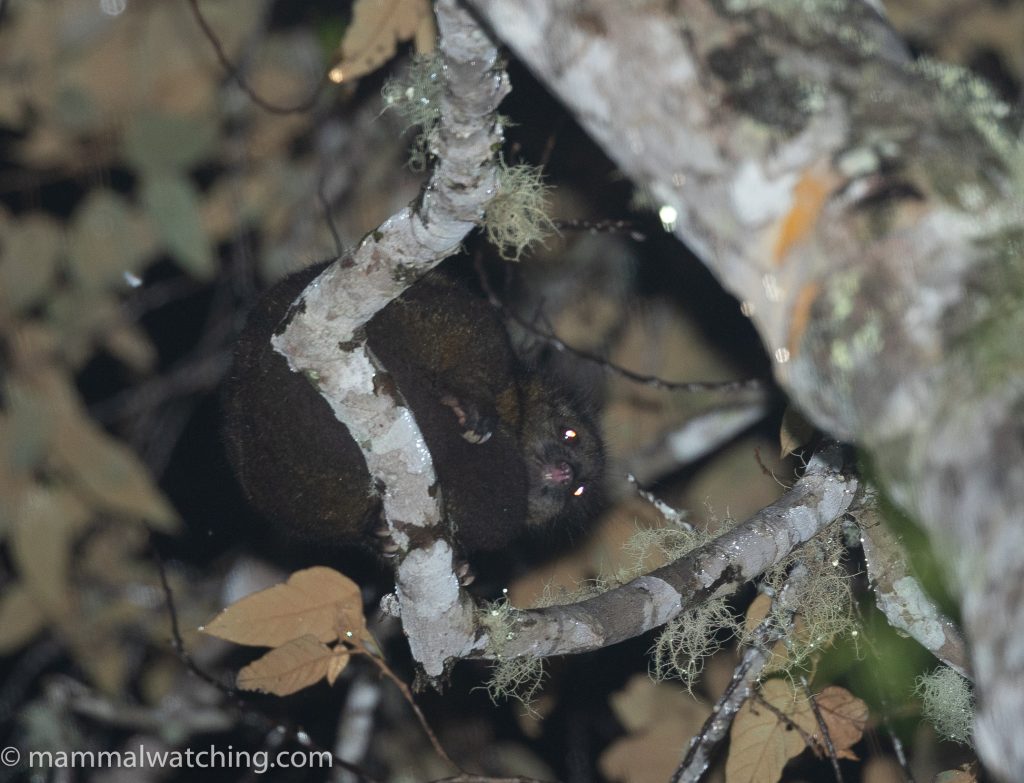
Stein’s Cuscus (Phalanger vestitus)
In June 2023 a night walk in the Arfaks (about 2 hours drive from Manokwari) produced a Reclusive Ringtail (Pseudochirulus coronatus), several Arfak Ringtails (Pseudochirulus schlegelii)and both Unstriped Tube-nosed Bat (Paranyctimene raptor) and Round-eared Tube-nosed Bat (Nyctimene cyclotis).
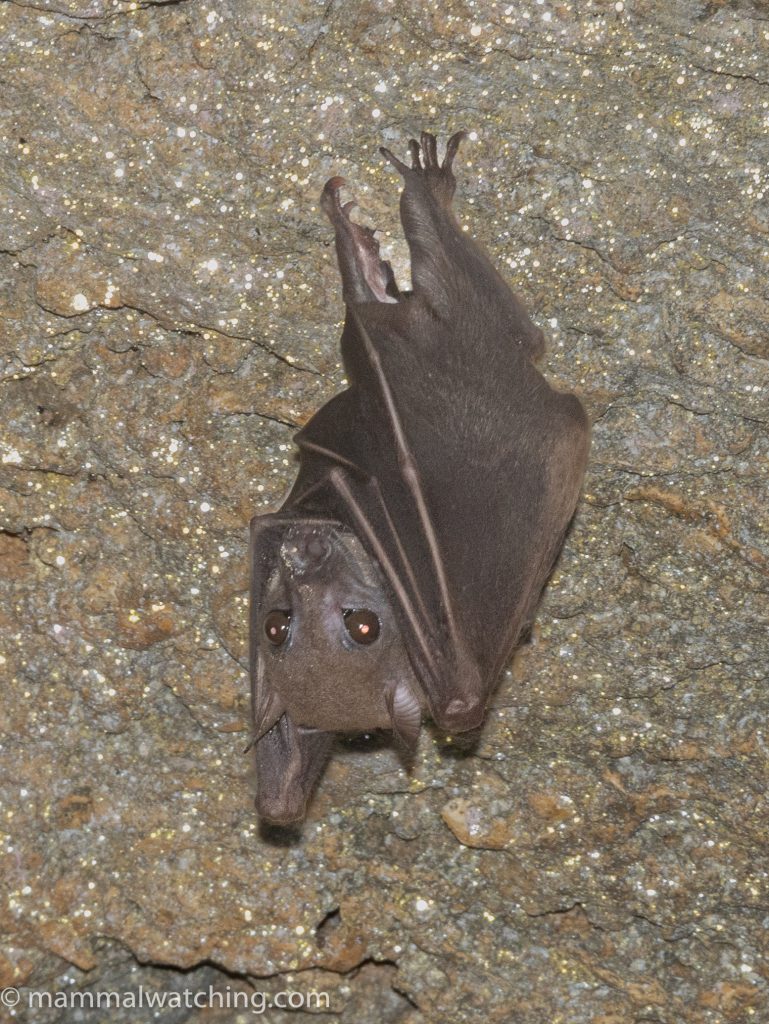
Lesser Bare-backed Fruit Bat (Dobsonia minor)
A bat cave close to the city in June 2023 held both Lesser Bare-backed Fruit Bat (Dobsonia minor) and Raffray’s Sheath-tailed Bat (Emballonura raffrayana).
Malagufuk and around
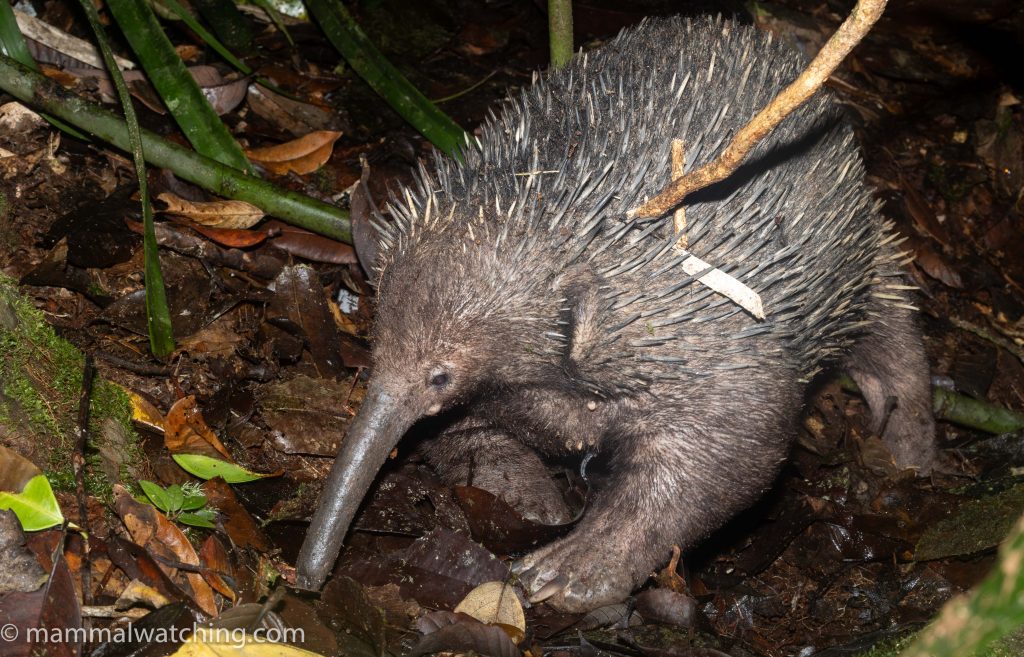
Western Long-beaked Echidna (Zaglossus bruijnii)
One epic night in a village close to Malagufuk in June 2023 produced Western Long-beaked Echidna (Zaglossus bruijnii), Black-tailed Dasyure (Murexia melanurus) and a Long-fingered Triok (Dactylopsila palpator).
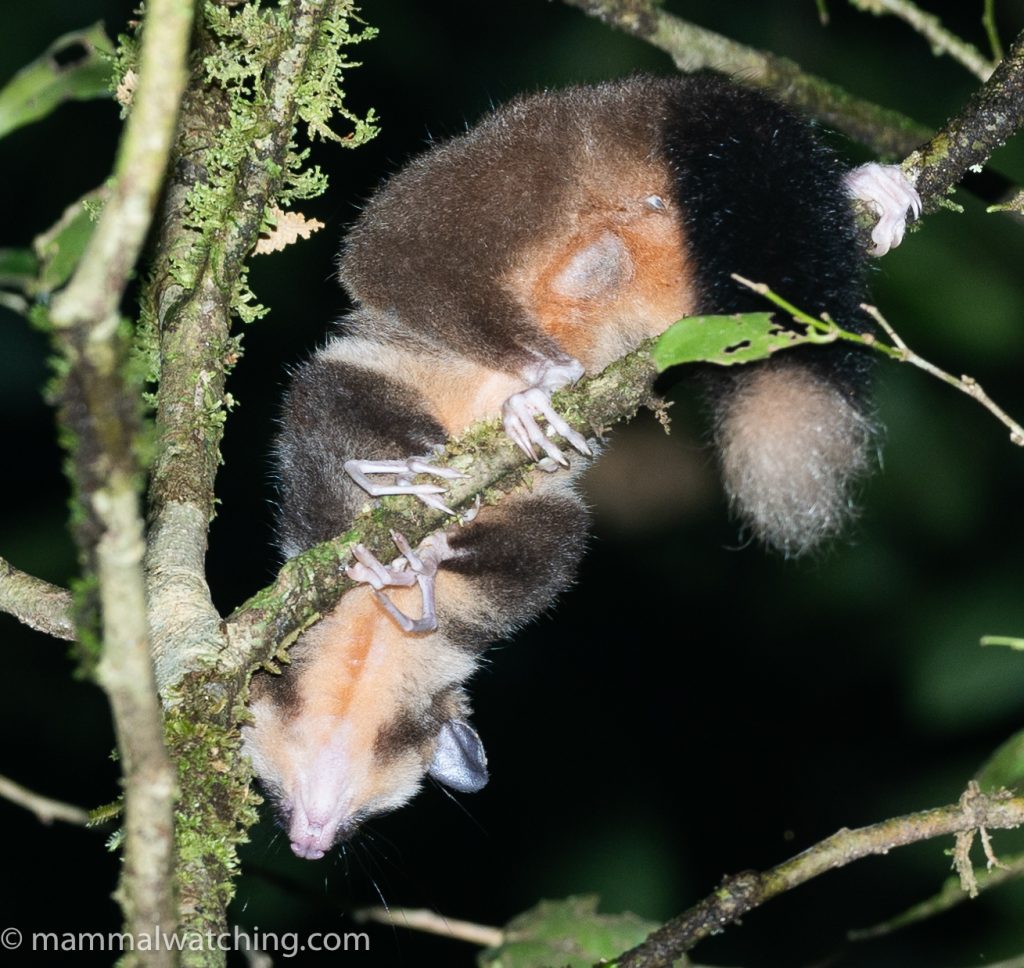
Long-fingered Triok (Dactylopsila palpator)
We also saw Bruijn’s Pogonomelomys (Pogonomelomys bruijnii), Large Spiny Rat (Rattus praetor), Lesser Sheath-tailed Bat (Mosia nigrescens) and Maluku Myotis (Myotis moluccarum).
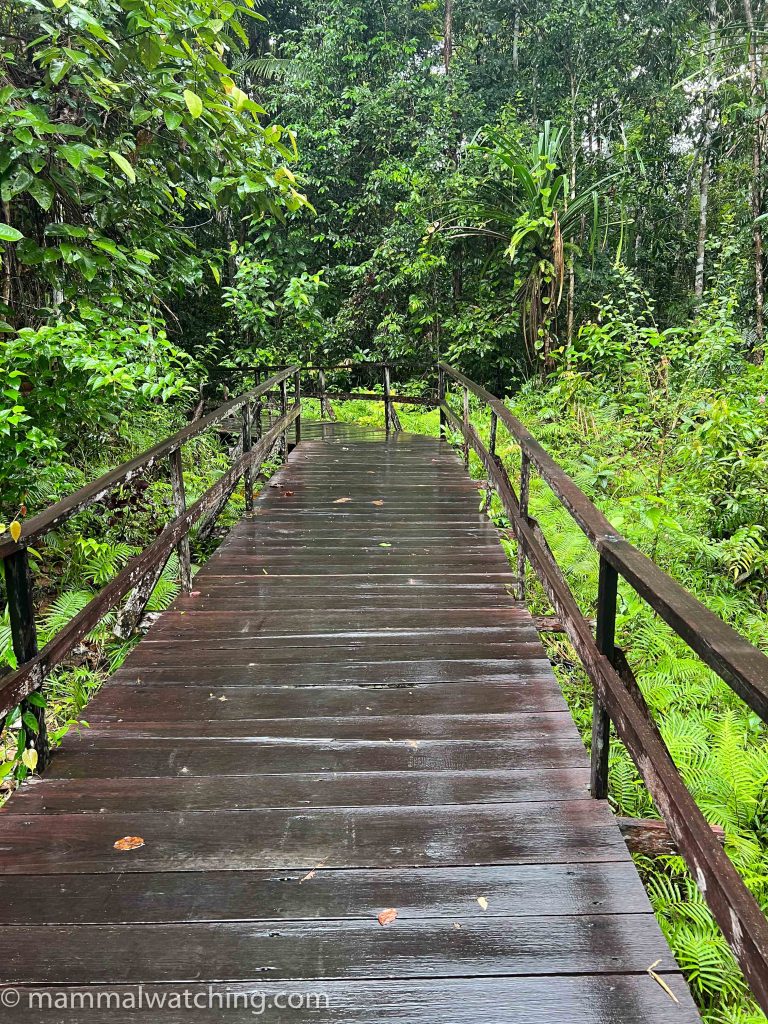
Malagufuk boardwalk
During five nights In Malagufuk itself in June 2023 we found Müller’s Three-striped Dasyure (Myoictis melas), Black-tailed Dasyure (Murexia melanurus), Common Echymipera (Echymipera kalubu), Long-nosed Echymipera (E.rufescens), Northern Common Cuscus (Phalanger orientalis) and Lowland Ringtail (Pseudochirulus canescens).
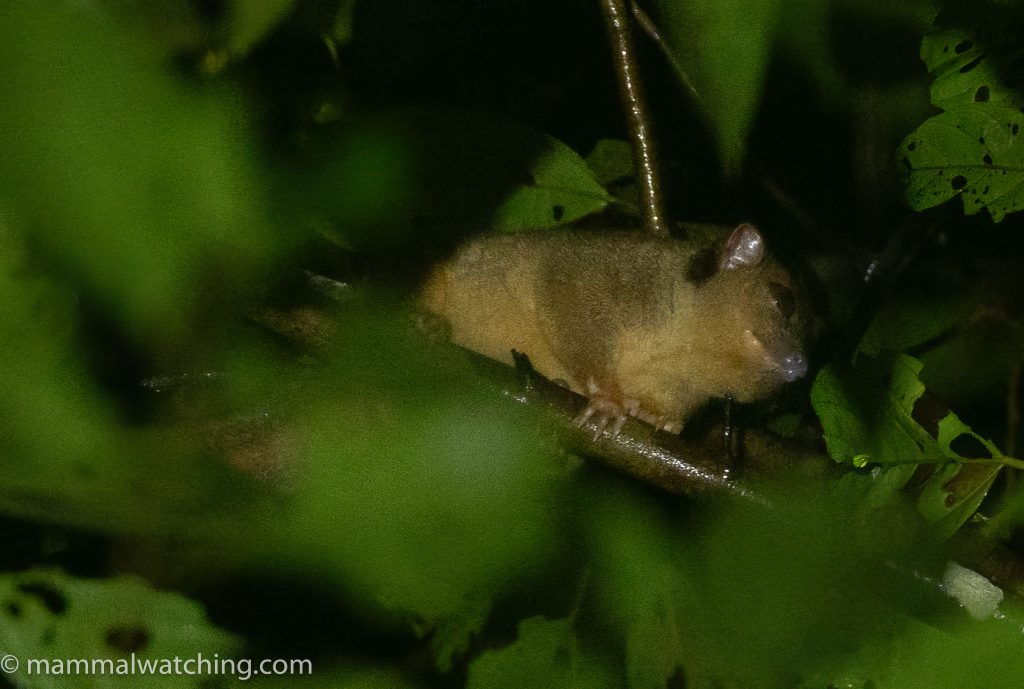
Lowland Ringtail (Pseudochirulus canescens)
As well as Striped Possum (Dactylopsila trivirgata), Papuan Glider (Petaurus papuanus), Brown Dorcopsis (Dorcopsis muelleri), Common Water Rat (Hydromys chrysogaster), and Long-footed Tree Mouse (Lorentzimys nouhuysii).
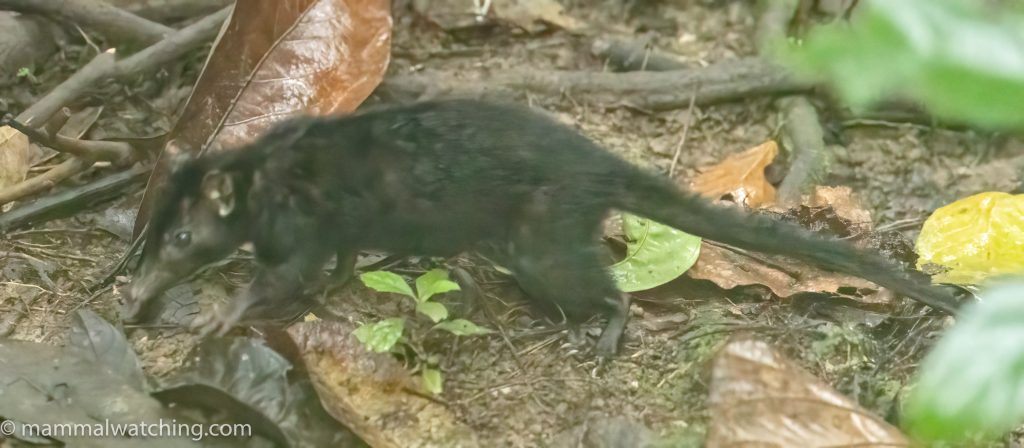
Müller’s Three-striped Dasyure (Myoictis melas)
We also saw Black-tailed Melomys (Melomys rufescens), Common Lowland Paramelomys (Paramelomys platyops), Bruijn’s Pogonomelomys (Pogonomelomys bruijnii),Loria’s Pogonomys (Pogonomys loriae), White-tailed Giant Rat (Uromys caudimaculatus), Polynesian Rat (Rattus exulans)and a mystery rat that night be a Large Spiny Rat (Rattus praetor).
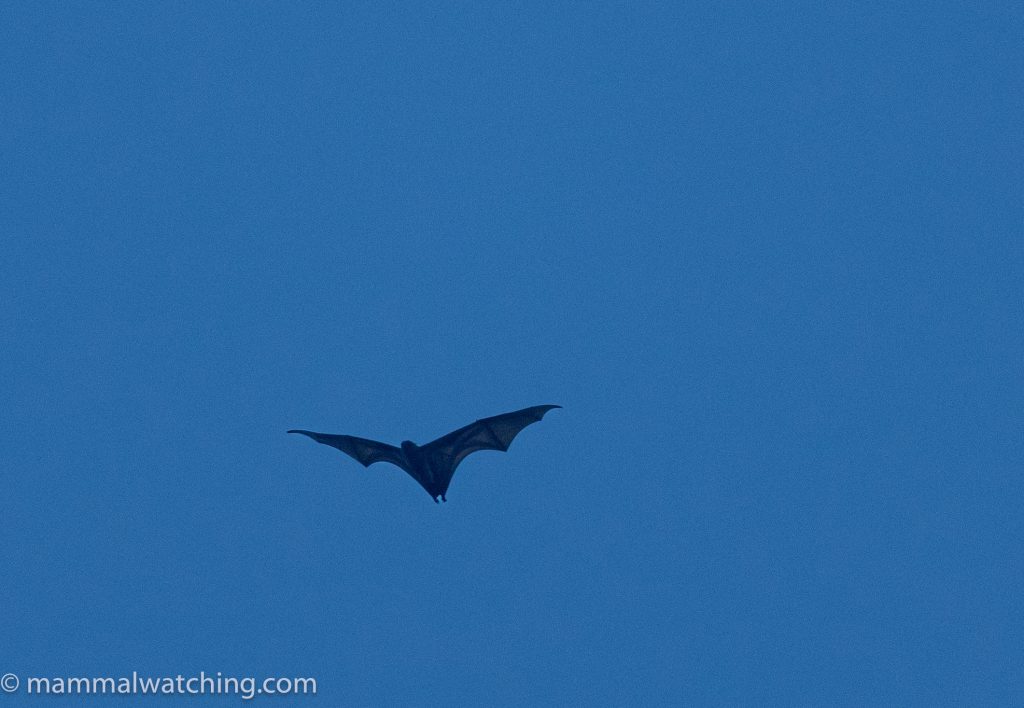
Great Flying Fox (Pteropus neohibernicus)
There were plenty of bats too: Common Blossom Bat (Syconycteris australis), Moluccan Naked-backed Fruit Bat (Dobsonia moluccensis), Unstriped Tube-nosed Bat (Paranyctimene raptor), Greater Tube-nosed Bat (Nyctimene aello), Common Tube-nosed Bat (N.albiventer), Large-eared Flying Fox (Pteropus macrotis), Great Flying Fox (P.neohibernicus), Diadem Leaf-nosed Bat (Hipposideros diadema), Biak Leaf-nosed Bat (H.papua), Raffray’s Sheath-tailed Bat (Emballonura raffrayana), Lesser Sheath-tailed Bat (Mosia nigrescens) and the little known Fly River Woolly Bat (Kerivoula muscina).
Raja Ampat
Waigeo Island
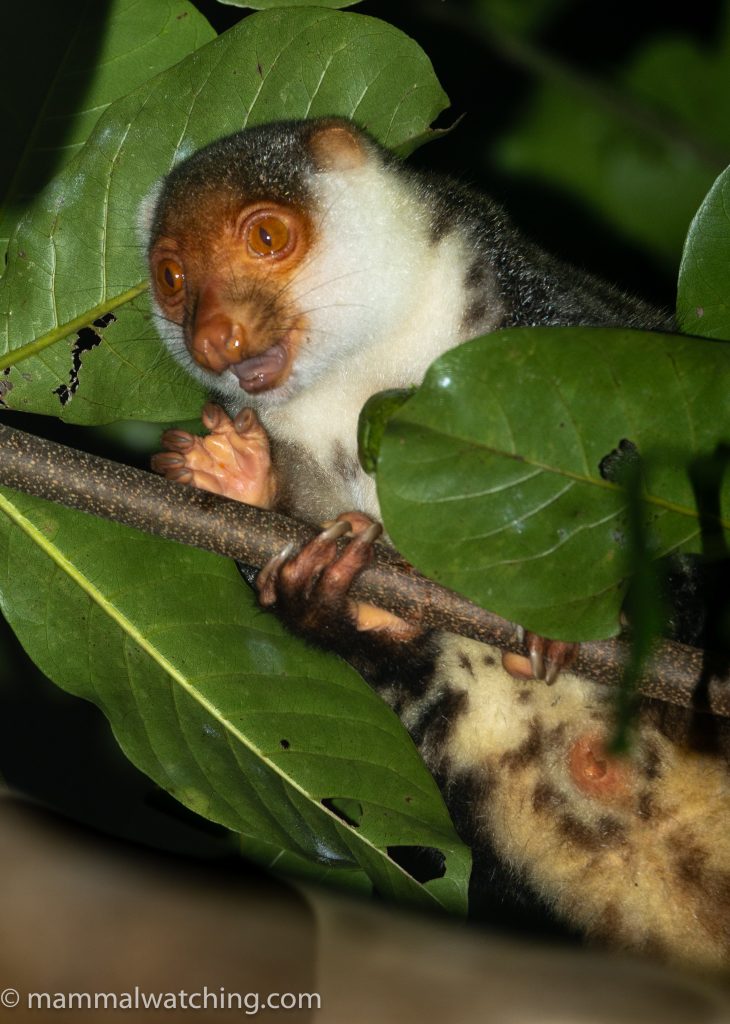
Waigeo Cuscus (Spilocuscus papuensis)
During two lazy nights on Waigeo in June 2023 we saw Waigeo Cuscus (Spilocuscus papuensis), Striped Possum (Dactylopsila trivirgata) and Large-eared Flying Fox (Pteropus macrotis).
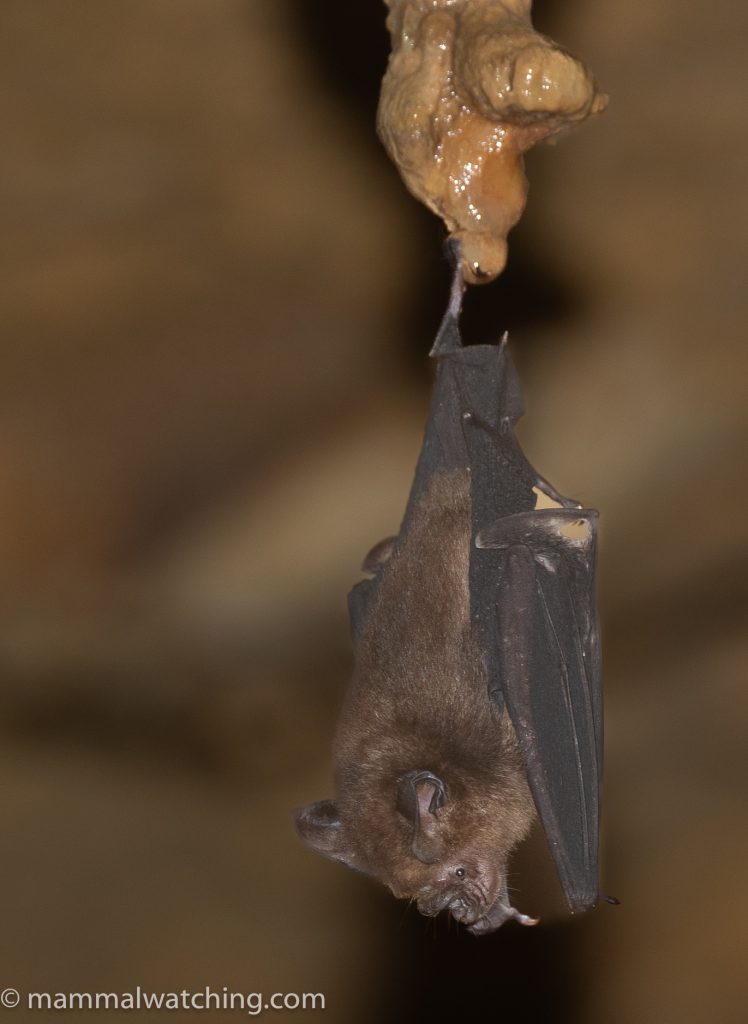
Biak Leaf-nosed Bat (Hipposideros papua)
A couple of bat caves produced a White-tailed Giant Rat (Uromys caudimaculatus), Trident Leaf-nosed Bat (Aselliscus tricuspidatus), Fawn-colored Leaf-nosed Bat (Hipposideros cervinus), Maggie Taylor’s Leaf-nosed Bat (H.maggietaylorae) and Biak Leaf-nosed Bat (H.papua), We found New Guinea Horseshoe Bat (Rhinolophus euryotis) and Little Long-fingered Bat (Miniopterus australis) flying around our resort.
On the ferry ride over to the island from Sorong we saw pods of Spinner Dolphin (Stenella longirostris), Indo-pacific Bottlenose Dolphin (Tursiops aduncus) and Melon-headed Whale (Peponocephala electra).
The Molucca (Maluku) Islands
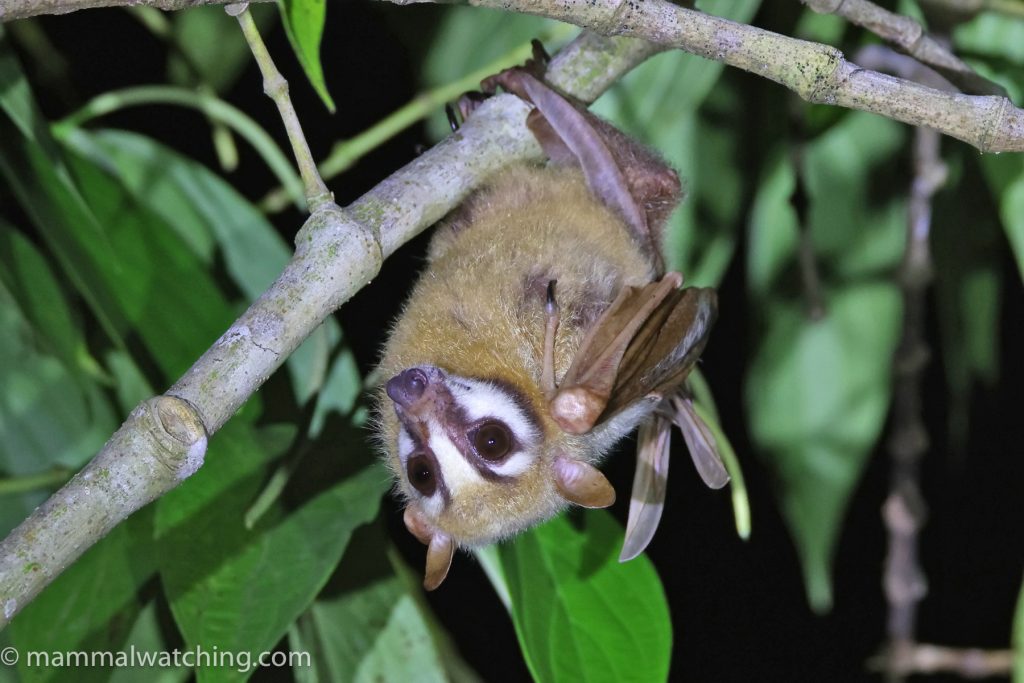
Moluccan Masked Flying Fox (Pteropus personatus), Halmahera
Halmahera
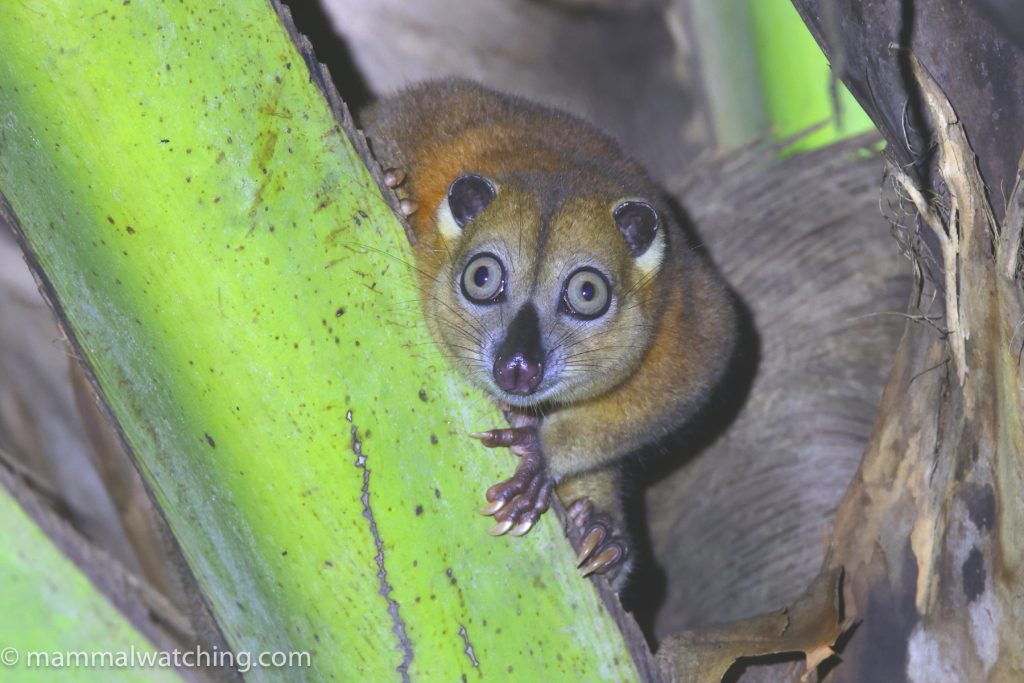
Moluccan Cuscus (Phalanger ornatus)
A very productive 24 hours on Halmahera in 2025 produced the stunning Masked Flying Fox, Halmahera Naked-backed Fruit Bat, Island Flying Fox, Halmaheran Blossom Bat, Common Tube-nosed Fruit Bat, Moluccan Cuscus), Biak Leaf-nosed Bat and Raffray’s Sheath-tailed Bat.
Ternate
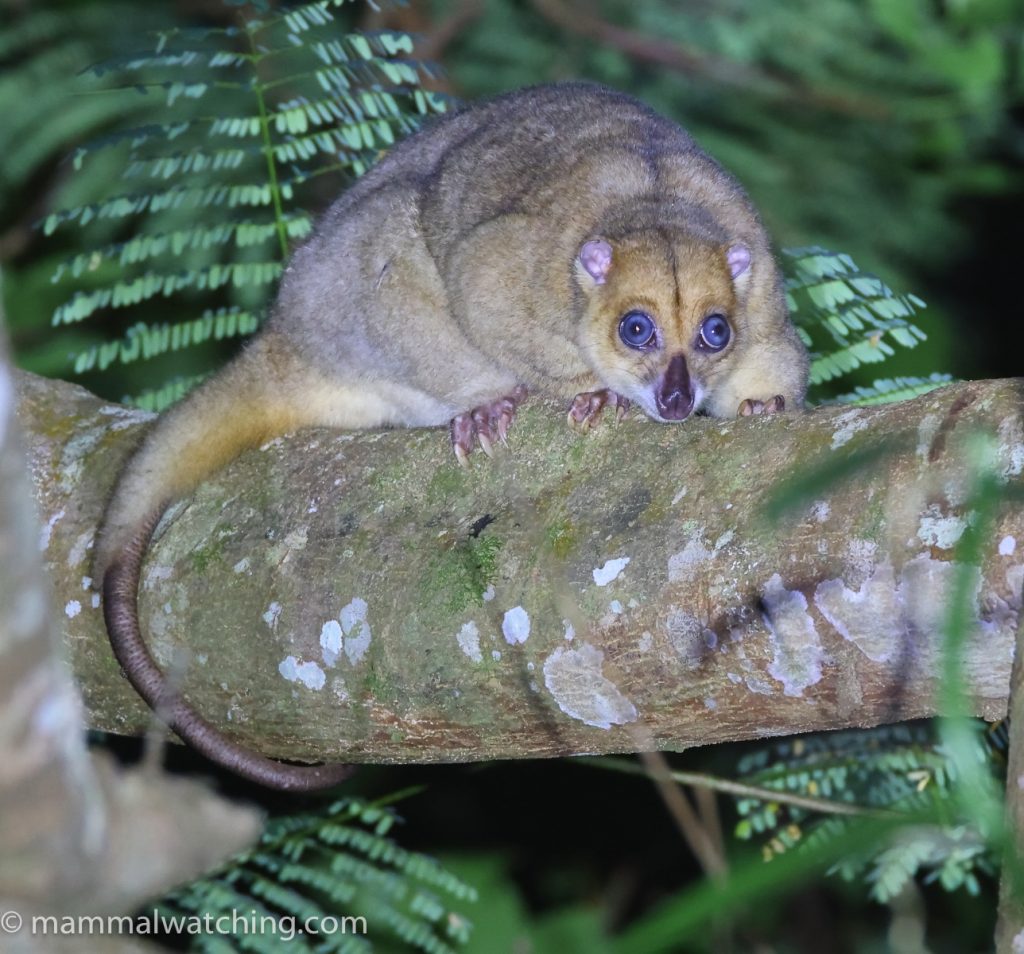
Blue-eyed Cuscus (Phalanger matabiru)
Two nights on Ternate in 2025 produced the endemic Blue-eyed Cuscus, Masked Flying Fox, North Moluccan Flying Fox, Halmahera Naked-backed Fruit Bat, Island Flying Fox, Geoffroy’s Rousette and North Moluccan Flying Fox.
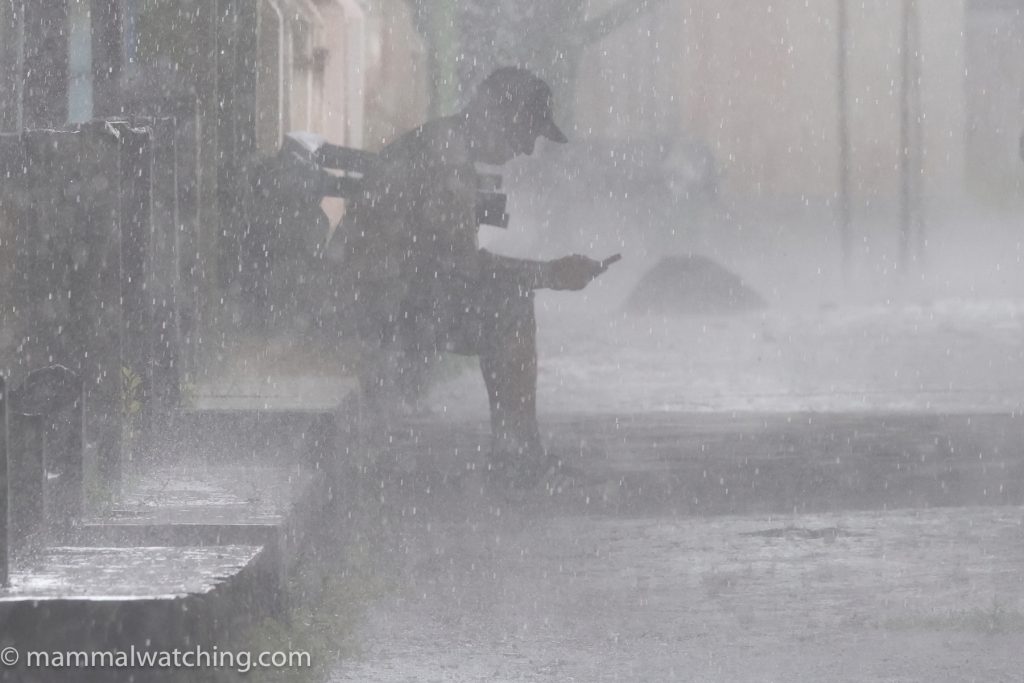
Community Reports
The Northern Moluccas (Halmahera & Ternate), 2025: Jon Hall, 3 nights & 12 species including Masked and North Moluccan Flying Foxes and Ornate and Blue-eyed Cuscuses.
Malasigi & Klalik, 2025: Hugh Lansdown, 8 days & 4 species including Western Long-beaked Echidna and Lowland Ringtail Possum.
Papua Occidental, 2025: Carlos Bocos, 22 noches y 36 especies incluidas Black-spotted Cuscus, Western Long-beaked Echidna y Biak Glider. En español
West Papua, 2024: Carlos Bocos with Royle Safaris, 2 weeks & 51 species including Grizzled and Vogelkop’s Tree Kangaroos, Western Long-beaked Echidna, Müller’s Three-striped Dasyure and an undescribed hipposideros bat. And here is the Royle Safari’s report of the trip..
Wondiwoi, Fakfak & Sorong area, 2023: Ben Crowson, 3 weeks & 21 species including Western Long-beaked Echidna and Stein’s Cuscus.
Sulawesi & West Papua, 2023: Dave Geo, with species on West Papua including Northern Common Cuscus and Lowland Ringtail Possum.
West Papua 2023: Jon Hall with Carlos Bocos, 16 days and 59 species including Grizzled and Vogelkop’s Tree Kangaroos, Western Long-beaked Echidna, Long-fingered Triok, Feathertailed Possum, four ringtail possum species, three cuscus species, New Guinea Jumping Mouse and a whole lot more. See also Ian Thompson’s entertaining report of the same trip and Charles Foley’s equally entertaining account.
Long-beaked Echidna and other mammals in West Papua and the Moluccas, 2023: John Goldie’s report of a birding cruise around Raja Ampat and the central Moluccas with 15 species including Omura’s Whale, Fraser’s Dolphin, Pygmy Killer Whale, Obi Cuscus, South Moluccan Flying Fox and Western Long-beaked Echidna.
West Papua, 2022: John Rogers, 15 days & 26 mammals including Stein’s and Waigeo Cuscuses, Long-fingered Triok and Papuan Long-eared Bats
West Papua, 2022: Carlos Bocos, 3 weeks & 27 species including Common Echymipera, Vogelkop Ringtail Possum & Great Flying Fox.
West Papua, 2021 & 22: Mark Spence, two trips and some great mammals including Waigeo Spotted Cuscus, Brown Forest Wallaby and Western Long-beaked Echidna.
West Papua, October 2019: Carlos Bocos, 3 weeks and 35 species including Ground Cuscus, Reclusive Ringtail Possum, Brown Pademelon, two Marsupial Shrew species and more.
West Papua, 2019: Carlos Bocos, 3 weeks & 28 species including Waigeo and Black-spotted Cuscus, Feathertailed Possum, Speckled Dasyure and a ton of cool bats.
The Moluccas, 2019: Carlos Bocos, 3 weeks & 26 + species including Northern Common Cuscus, Blue-eyed Cuscus, and some nice bats including North Moluccas, Seram, Moluccan, Black-bearded & Kei Flying Foxes
West Papua, 2017: Steven Anyon-Smith, 3 weeks & 17 species including Masked and Reclusive Ringtail Possums, Stein’s Cuscus and Black-tailed Melomys.
Raja Ampat, 2016: Curtis Hart, 4 weeks & 8 species including Northern Common and Waigeo Cuscuses.
Raja Ampat (West Papua), 2014: Steve Anyon-Smith’s entertaining account of 3 weeks with few mammals (as usual in this region) including Cenderawasih Bay Flying Fox, Beaufort’s Bare-backed Fruit Bat, Raffray’s Sheath-tailed Bat and Waigeo Cuscus.
Also See
Listen to Carlos Bocos, Jon and Charles talk about their trip to West Papua on the mammalwatching podcast, August 2023
Mammals of New Guinea field guide?, October 2024
Attenborough’s Echidna Rediscovered, November 2023
RFI: one night in Sorong, October 2023
Checklist of the Mammals of Indonesia, March, 2020
New Guinea Highland Wild Dog Rediscovered, March, 2017
2 Comments
-
samuelmarlin
What an amazing trip report Jon with several mythical species like the long-beaked echidna and tree kangaroos. Congratulations!
Interesting to see that there are still some places on earth where you would still observe many lifers 🙂
We went diving like 10 years ago in Waigo Island (this island is a world diving paradise) and we also saw at our lodge a spotted waigo cuscus without even really searching so I guess this very localized species is quite common there.
Leave a Reply
You must be logged in to post a comment.


Manul
What a legendary trip! Congratulations to all.
I really hope that these fantastic mammals can be helped with some good mammalwatching tourism.